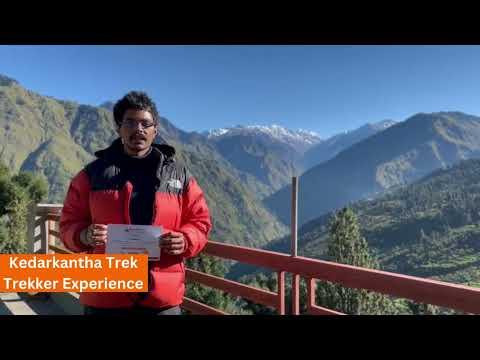The Chandrakhani Pass Trek is a captivating adventure that takes you through the mesmerizing landscapes of the Himalayas. This article unveils the beauty and allure of this trek, highlighting its scenic trails, breathtaking vistas, and cultural encounters, making it a must-visit destination for nature enthusiasts and adventure seekers.
Overview of the Chandrakhani Pass Trek
The Chandrakhani Pass Trek is located in the Kullu district of Himachal Pradesh, India. It is a moderate-level trek that spans approximately 26 kilometers, starting from Naggar and concluding at the village of Malana. The trek offers a perfect blend of natural beauty, alpine meadows, lush forests, and panoramic views of the surrounding peaks.
Scenic Landscapes and Breathtaking Vistas
The trek to Chandrakhani Pass treats trekkers to stunning landscapes at every turn. As you ascend, you'll witness picturesque valleys, cascading waterfalls, and verdant forests filled with oak, pine, and deodar trees. The trail opens up to mesmerizing vistas of snow-capped peaks, including Deo Tibba, Pir Panjal Range, and Parbati Range, leaving trekkers in awe of the majestic Himalayan beauty.
Cultural Encounters and Village Life
One of the unique aspects of the Chandrakhani Pass Trek is the opportunity to interact with the local communities. Along the route, you'll encounter quaint villages inhabited by friendly locals who warmly welcome trekkers. These villages provide insights into the local way of life, traditional customs, and vibrant culture of the region.
Chandrakhani Pass: The High Point
The highlight of the trek is reaching the Chandrakhani Pass, situated at an altitude of approximately 3,660 meters. Standing atop the pass, you'll be rewarded with panoramic views of the surrounding Himalayan peaks and the Parbati Valley below. The feeling of accomplishment and the breathtaking vistas make this a memorable and cherished moment for trekkers.
Flora and Fauna
The Chandrakhani Pass Trek is blessed with diverse flora and fauna. As you traverse through the forests and meadows, keep an eye out for Himalayan flowers like primroses, orchids, and wild roses. The region is also home to a variety of wildlife, including musk deer, monal pheasants, and Himalayan langurs, offering nature enthusiasts a glimpse into the rich biodiversity of the Himalayan ecosystem.
Weather and Best Time to Trek
The best time to undertake the Chandrakhani Pass Trek is during the months of May to October when the weather is relatively mild and the trails are accessible. During these months, the region experiences pleasant temperatures, clear skies, and a vibrant display of blooming flowers, enhancing the overall trekking experience.
Trekking Essentials and Safety Tips
Proper preparation and packing are essential for a successful and safe trek. It is advisable to carry sturdy trekking gear, comfortable clothing, and essential supplies like food, water, and first aid. Additionally, acclimatization to the altitude, staying hydrated, and following the instructions of experienced guides contribute to a safe and enjoyable trekking experience.
For More Info:-






Comments